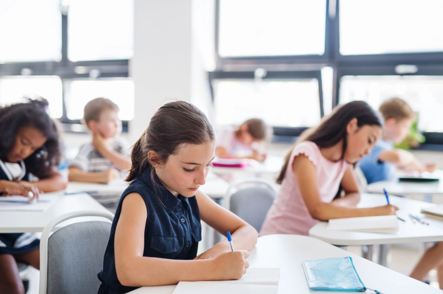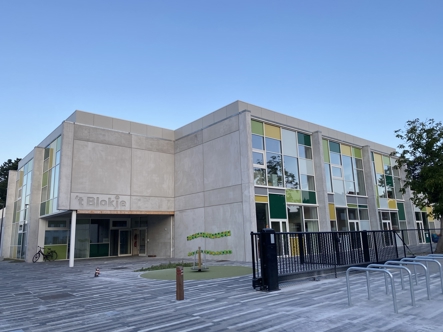
Schools
Improvement in ventilation can generate tremendous cost savings and significantly reduce the energy consumption of the building. It is also proven that the overall health and the results of students and staff is enhanced by a better indoor climate.
At Swegon we provide energy efficient solutions for indoor environments where students can be at their best, today and tomorrow.
Improve energy efficiency
Classrooms in school buildings are typically empty more than they are occupied. When rooms are not in use the ventilation demand is low, however when the rooms are in use the demand for ventilation is very high.
By making use of these building occupancy trends we ‘open the doors’ to excellent energy savings potential. For example, installation of mechanical ventilation with a heat exchanger could recuperate around 90% of the heating/cooling energy that would otherwise be lost in the exhaust air. By also choosing the right systems solutions for the mechanical ventilation, further savings can be made.
To take energy savings to the next level, the answer is to control the indoor climate using demand control ventilation strategies. That means monitoring the actual needs in the room, and adjusting the airflow, heating and cooling in response. In this way, the indoor air quality can be assured in the most efficient way. Studies show demand control ventilation saves up to 80% of the fan energy and 40% of the heating and cooling energy.
Improve student results
Improving the ventilation in the classroom is a simple way to improve student results.
Improved ventilation has a positive impact on results in many ways such as: improving alertness, memory and concentration.
Studies have shown that increasing the ventilation rate from ‘open window-level’ to 'mechanical ventilation level’ improves test results, with the more complex the task the more dramatic the effect (see graph below).
We want to create school ventilation solutions that save energy but also allow for students to thrive and improve their results.
Sources: Gao, Wargocki, Wang. Ventilation System Type and the Resulting Classroom Temperature and Air Quality During Heating Season (Sept 2014) I Bakó-Biró et al. Building and environment (2011) Ventilation rates in schools and pupils’ performance I Fraunhofer Institute for Building Physics IBP (2016) Designing classrooms to enhance performance
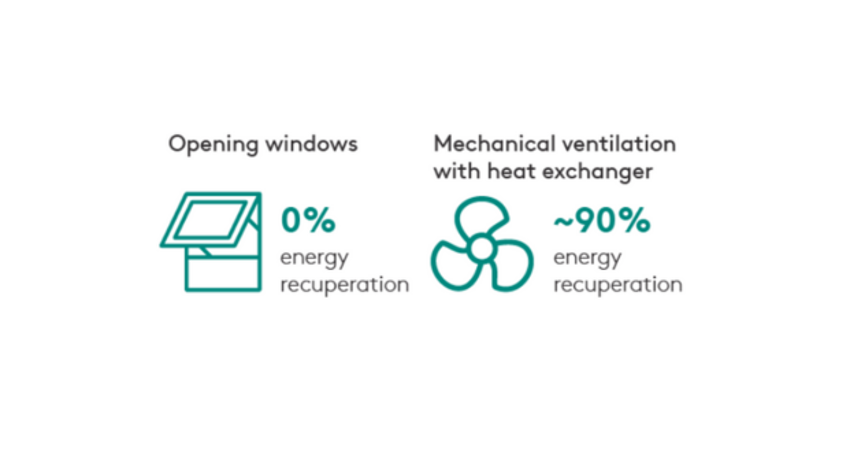
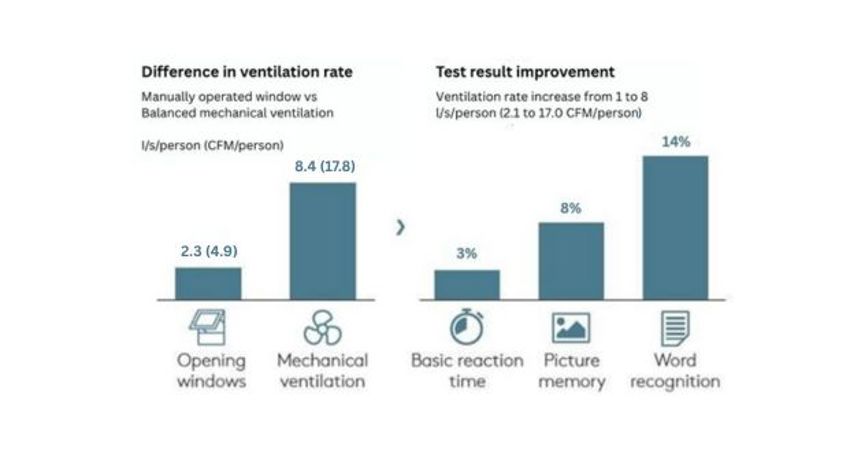
Improve student health
Improving the ventilation in classrooms has a direct connection to improving the health of the students and teachers, and this can be seen to directly correlate with an increase in attendance.
Poor ventilation can cause headaches, increase asthma symptoms and respiratory problems, and contribute to coughs and rhinitis. When these health problems are made worse at school, students stay away from the classroom.
Research has shown that a worsening of the indoor air quality (in this case an increase of the carbon dioxide level to 1000 ppm), may correspond to significantly increased absence rates among pupils (in this case with up to 20%).

Source: Shendell et al. Indoor Air (2004) Associations Between Classroom CO2 Concentrations and Student Attendance in Washington and Idaho

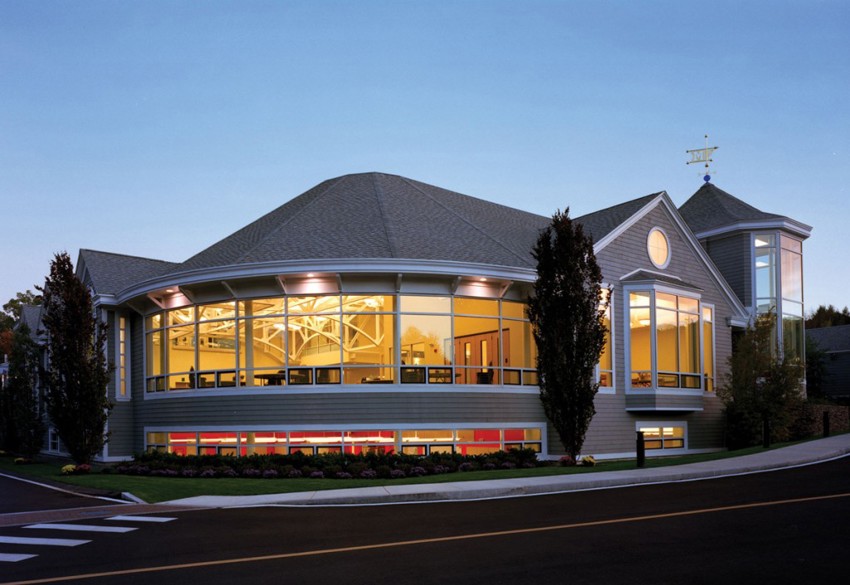
Renovating
K-12 school districts spend over $8 billion nationwide on energy costs each year, and more than 30 percent of that energy is wasted.
The average age of public school buildings in the US is 42 years, with a significant portion needing facility upgrades and maintenance. As schools age, renovation is unavoidable. And when renovating, many school facility managers be required to bring their buildings up to meet local codes. The need for renovating older schools presents opportunities for ventilation upgrades that improvement occupant health and student performance.
It's easy to see that poor ventilation is not good for our students, and for them to achieve their best, ventilation must be improved.
By embracing improvements to school ventilation schools can dramatically increase their energy savings and decrease building operating costs, while providing the right environment for their students to perform at their best.
Source:
Swegon solution for better air quality in schools
We have a wide range of products ranging from decentralized packaged options to demand controlled centralized systems, all of which improve air quality in the classroom while contributing to improved student academic performance, occupant health and reduced energy consumption.
There is no single solution to apply over and over. We work closely with our customers to determine options exist for their specific building project and which Swegon solution would best meet their needs.
Learn more


